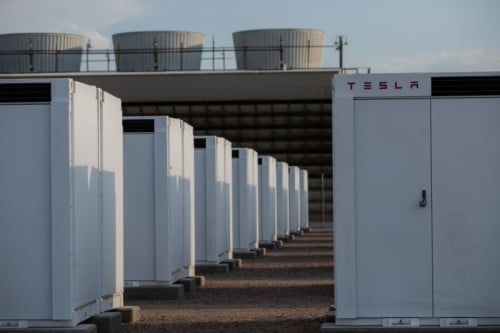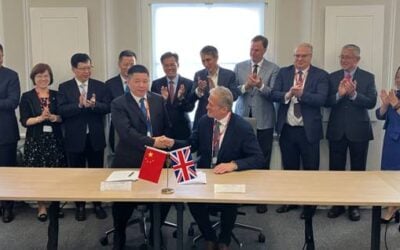
Energy storage system integrators are diversifying their procurement strategies to ease supply chain constraints, with the electric vehicle (EV) market a bigger priority for battery cell and module suppliers.
Integrators are starting to procure or consider using Tier 2 battery makers’ products, as investors become “comfortable with the level of risk involved in this market,” Oliver Forsyth, analyst for IHS Markit, told Energy-Storage.news.
Enjoy 12 months of exclusive analysis
- Regular insight and analysis of the industry’s biggest developments
- In-depth interviews with the industry’s leading figures
- Annual digital subscription to the PV Tech Power journal
- Discounts on Solar Media’s portfolio of events, in-person and virtual
“If you subtract the amount that will go to the automotive sector, there isn’t a lot leftover for the stationary market. For the system integrators and developers to continue to compete for that small segment left of supply is going to be challenging over the next two, three years, until new factories and manufacturing capacity is built out,” he said.
Forsyth spoke recently about the growing level of competition between energy storage system integrators — including new entrants to the space from developers to battery makers that have diversified into the space — after IHS Markit published its annual survey on the 2021 system integrator landscape.
The major players are able to secure long-term battery supply deals: top-ranked integrator Fluence said ahead of its IPO last year that it has secured 20GWh of supply until the end of 2024. The company also has a partnership with Northvolt, which has the first of its gigafactories in Europe ramping up by the end of that timeframe. Even so, it recently announced future contracts will be signed pegged to raw materials index-based pricing.
Powin Energy, also in the top 10 ranking, has got multi-year deals with Chinese cell manufacturers CATL and EVE Energy.
“The important thing to realise here is just how small a market the stationary energy storage market is relative to EVs,” he said.
Even the biggest companies in the space will be de-prioritised against electric transport sector customers, which is “just something that the stationary market needs to get used to”.
Even Tesla, again highly-ranked in the survey, which produces its own cells is not immune, with the company’s leadership having revealed that its own EV division had to take priority over stationary storage last year for materials supply. It still managed to deploy nearly 4GWh of storage in 2021.
In the short term, it makes sense then to diversify or expand the base of suppliers, which IHS Markit is seeing across the system integrator landscape. System integrators are starting to sign contracts and long-term MOUs with Tier-2 suppliers, he said.
“It makes sense because you don’t want to be stuck with one supplier for competitive reasons. For pricing, you don’t want them [suppliers] to have that kind of price control over you. But also, from a risk perspective, if for some reason they cannot honour that agreement, you want to be able to know that you can turn to someone else.”
Historically there has been a very small pool of bankable Tier-1 cell suppliers, perhaps as few as four, but lenders and investors are starting to be a bit more comfortable working with suppliers outside that bracket.
It helps also that many of those investors are not that new to the market any more. Some have experience over multiple projects and portfolios and have started to understand and be happy to take on the level of risk involved, Forsyth said.
Those more experienced investors have started to consider going with cheaper Tier-2 options. That applies for their choice of system integrator as much as it does their integrators’ selection of cell suppliers.
“When you come to financing, if who you’re trying to get involved in someone [for whom it is] their first time investing in battery storage, they sometimes want security, they want to be able to know that this project is in good hands.”
“That is when your Tier-1s just come into play — but then we’re seeing, more and more where there’s been people investing into multiple battery projects now, they are getting comfortable with the level of risk involved in this market. They start to think, ‘Okay, we are comfortable, we understand this technology. Potentially, we can try to find a lower cost partner,’
“… and that’s where potentially some of these newer system integrators — or if you’re looking at the battery manufacturing space, some of the Tier-2 cell providers — come into play. We start to see people willing to take that risk and try to test out some of these newer players, because they are sometimes cheaper and that is an advantage for them.”






